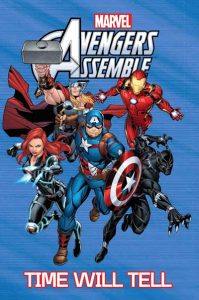Welcome back, creators. In the Step 1, we reviewed how to plan a story idea for an 8-Page Story. You should read that post before you read this one.
All good? Good. Let’s get started.
After this, check out Step 3.
Step 2: Plotting Your 8-Page Comic Story
In this post, we’ll look at story breakdown as part of plotting. This is an important step, particularly for new writers. It is pretty rare for new writers to sit at the keyboard and craft a good story without a plot.
Just a side note on the word “plot.” This is a term that is open to some interpretation. Plotting comics comes from the early “Marvel method” of writing stories, pioneered by Stan Lee and Jack Kirby. In the early days, Stan was working on so many comics that he would literally hand a plot to an artist. Talented Marvel artists like Jack Kirby, Stan Lee, and John Romita would basically break down a story. Stan would come back later to add dialogue.
The DC method required the writer to deliver a full script. That includes page breakdowns, panel breakdowns, dialogue, and even certain creative direction. Of course, it takes a good deal longer to write full script than it does to plot.
However, and this is an important point I want to make, we will plot and then script in this project. The plotting will give you a valuable opportunity to reorganize your story to fit the 8-page limit. It may sound easy, but it can be challenging. It’s better to plot before scripting to save yourself and your creative partners time and frustration later.
Start By Counting
Writing a comic is part art and part…math. In this case, the math is really simple when you only have to fill 8 pages. It gets tricky when you have to plot a multi-issue story. The theory, however, is pretty much the same.
In most comics, you’ll start Page 1 on a right-hand page. Then your even numbers (2, 4, 6, & 8) are on the left-hand pages. The odd numbers (1, 3, 5, & 7) are on the right.
I keep a cheat sheet on the side of my monitor that shows the page breakdown. I use this to guide my pacing. I know where I want my story to begin and end. I use the page breakdown to figure out the middle parts to get me there.
Download and print the Facing Pages Guide.
Plotting The Story
 As noted above, I am plotting the Avengers Assemble story assigned my my editor Darren Sanchez at Marvel Comics. By this point, he has given me approval on my story idea and then I break down the plot.
As noted above, I am plotting the Avengers Assemble story assigned my my editor Darren Sanchez at Marvel Comics. By this point, he has given me approval on my story idea and then I break down the plot.
The final story was drawn by comic book legend Ron Lim and is published in Avengers Assemble: Time Will Tell.
It looks like this:
Pg1 Opening, establishing. Asgard, Quinjet w/Thor, Wasp, Banner
Pg2 Quinjet attacked, downed.
Pg3 Thanos & Terrax established. Thor vs Terrax.
Pg4 Thor in danger. Outmatched vs Terrax & Thanos & rock creatures. Wasp injured.
Pg5 Hulk-out!
Pg6 Hulk vs everybody.
Pg7 Hulk battle distraction.
Pg8 Thanos to get stone. But wait…
Pg9 Wasp squares off against Thanos.
Pg10 Wasp, Hulk, Thor – Avengers Assemble!
Pg11 Epilogue
Getting to the Scene
Simple right? Actually, it’s quite tricky. I wanted to get us to Page 9, 10, & 11. That’s because the best part of the story is when Wasp shows incredible bravery. And then she solves the problem with her unique power and with teamwork.
Not all editors will do this, but Darren talks through every story with me. In this case, he shared me really good tips on how to trim unnecessary scenes and highlight the fun scenes. He knew I wanted to get right into the story, so he suggested ways of trimming some of the talk-heavy scenes in the first two pages. That helped me get right into the action.
In your story, try to get someone to help you break down the pages to find the core idea. Trim everything out that doesn’t matter and get to the best parts in a visually satisfying way.
We have a message board for discussing your 8-Page Story.
Joining the #8PgChallenge
If you’re following on the calendar, this is also the time for writers to create a character list for the art team. By now, you should know which characters matter to the story. You need to remove any character, scene, or dialogue that doesn’t propel the story forward in a meaningful way. It’s “only” 8 pages, so you will have to work hard to trim anything that isn’t important for this particular story.
In the next post, we’ll go to Step 3, which is the script. Be sure to join the message boards, so I can add you to the calendar.
About the Comic Book School 8-Page Challenge
Read the announcement for the 8-Page Challenge
Register on the Comic Book School forums and post your story idea.
